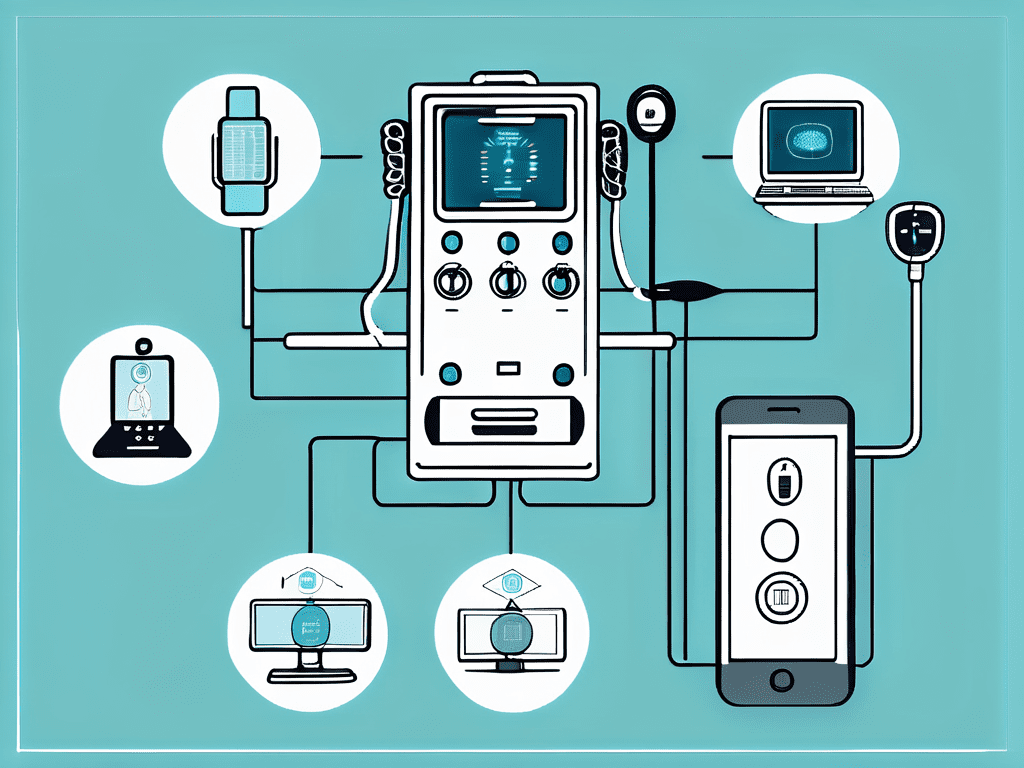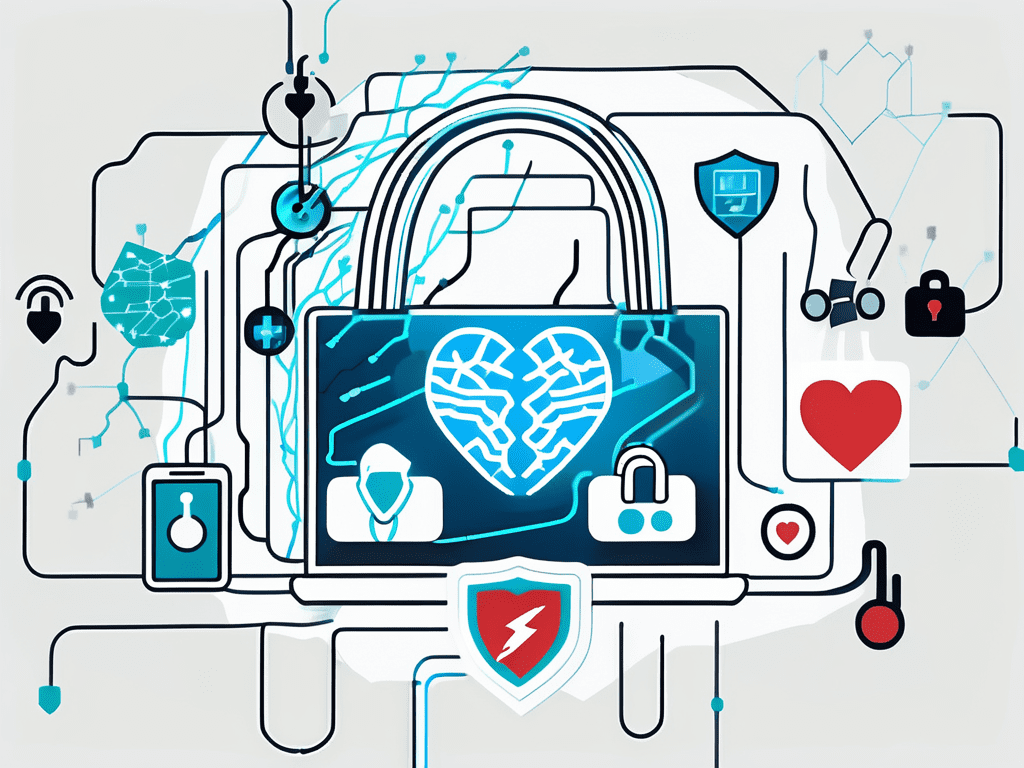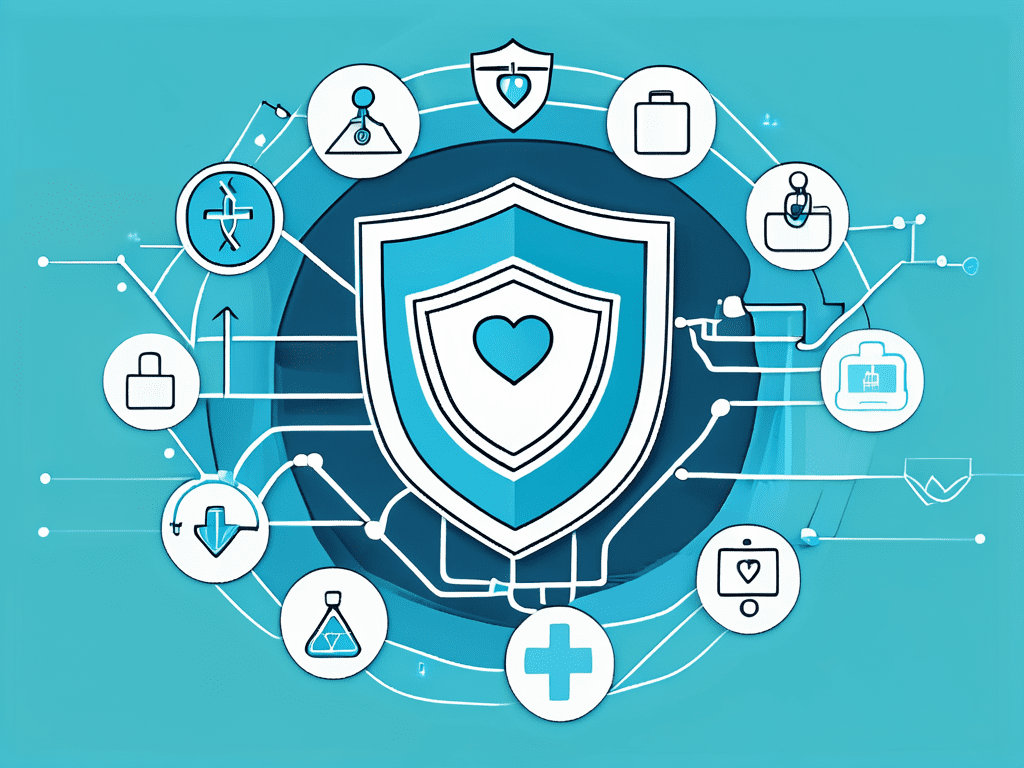Updated November 10, 2024
Telemedicine has transformed significantly since its inception. Initially conceived to connect healthcare professionals with patients at a distance, it has evolved into a complex ecosystem of digital health solutions.

The shift to digital healthcare stood on the shoulders of advancements in technology. Once, if you lived in a remote area, accessing specialized medical care could feel like scaling Everest. Now, with a few clicks, you can consult with world-class doctors from the comfort of your home.
The Shift to Digital Healthcare
The COVID-19 pandemic accelerated this digital shift. Suddenly, telehealth options went from a nice-to-have to a must-have. Patients embraced it, and healthcare providers scrambled to adapt.
But with innovation comes responsibility. The surge of telemedicine exposed vulnerabilities. Healthcare systems struggled to secure data when the world seemed to dial in for a healthcare consultation.
The Role of Telemedicine in Modern Healthcare
Today, telemedicine plays a crucial role in modern healthcare. It extends access, enhances convenience, and reduces patients’ travel burden.
Imagine a working parent who can’t take time off for a doctor’s appointment. With telemedicine, they can engage in a consultation during their lunch break. Convenience? Check. Efficiency? Double-check.
Telemedicine is not just about virtual consultations; it encompasses many services, including remote monitoring, mobile health applications, and even AI-driven diagnostic tools. For instance, wearable devices can track vital signs and send real-time data to healthcare providers, allowing for proactive management of chronic conditions. This shift towards a more integrated approach empowers patients and enables healthcare professionals to make informed decisions based on continuous data rather than episodic visits.
Additionally, telemedicine has opened doors for mental health services, breaking down barriers that previously hindered access to care. With the stigma surrounding mental health still prevalent in many societies, the ability to seek help from the privacy of one’s home has encouraged more individuals to reach out for support. Virtual therapy sessions have become a lifeline for many, providing essential services to those who might otherwise go without. This evolution in mental health care underscores the adaptability of telemedicine in addressing diverse healthcare needs in our increasingly digital world.
The Intersection of Telemedicine and Cybersecurity
As telemedicine becomes mainstream, the intersection with cybersecurity becomes pronounced. Patient data is invaluable—like gold in the digital world—and protecting it is paramount.
Cybersecurity ensures that safeguards are in place to protect sensitive information from prying eyes and malicious actors.
The Importance of Cybersecurity in Telemedicine
Cybersecurity is not just a technical issue; it’s a trust issue. Patients need to feel confident that their data is secure when they engage in telemedicine. After all, nobody wants their private health conditions shared like gossip over coffee.
Effective cybersecurity builds that trust. It creates a safe environment where patients feel comfortable discussing their medical concerns without fear. This trust is crucial, especially in a world where personal health information can be exploited for identity theft or insurance fraud. When patients know their data is protected, they are more likely to engage openly with healthcare providers, leading to better health outcomes and more accurate diagnoses.
Common Cybersecurity Threats in Telemedicine
The threats to telemedicine are numerous and evolving. Phishing attacks, ransomware, and data breaches are just a few. Imagine receiving an email that looks legitimate, but it’s a trap waiting to ensnare you.
Healthcare providers are constantly battling against these potential threats. They must stay one step ahead to protect patient data and their reputation. Furthermore, the rapid adoption of telehealth technologies has outpaced the development of robust security measures, leaving many systems vulnerable. For instance, unsecured Wi-Fi networks can serve as gateways for hackers to intercept sensitive communications. As telemedicine platforms integrate more advanced technologies like artificial intelligence and machine learning, the need for sophisticated cybersecurity measures becomes even more critical, ensuring that these innovations do not inadvertently expose patient data to new risks.
The Vulnerability of Patient Data
Patient data vulnerability is a serious concern. The nature of patient data—a mix of personal, financial, and health information—makes it particularly enticing for cybercriminals.

Healthcare data is at the top of the mountain in a world where data is currency. When stolen, the consequences can be devastating. Patients can face identity theft, and healthcare providers can deal with catastrophic financial losses.
The Nature of Patient Data
Patient data isn’t only comprehensive; it’s intimate. It includes everything from personal identification details to medical histories and prescriptions. When this information gets into the wrong hands, it can be used maliciously.
Consider how much trust patients place in healthcare providers. This trust is built on believing their sensitive information will be handled carefully. The emotional toll on patients who experience a data breach can be significant, leading to anxiety and a sense of vulnerability. They may feel exposed, not just in terms of their health information but also regarding their personal lives, as many medical records contain sensitive details about mental health, substance abuse, and other stigmatized conditions.
Why Patient Data is a Prime Target for Cyber Attacks
Why is patient data such a prime target? Well, think of it this way: medical records can sell for ten times more than credit card numbers on the dark web. This staggering value makes it a hot commodity for cybercriminals.
A single breach can potentially expose thousands of records. The impact reverberates through the healthcare system, affecting patients and providers alike. Beyond the immediate financial implications, healthcare organizations face regulatory scrutiny and potential lawsuits, which can further strain their resources. The reputational damage can be long-lasting, as patients may seek care elsewhere, fearing their data will not be adequately protected. As healthcare technology continues to evolve, so too do the tactics employed by cybercriminals, making it imperative for healthcare providers to stay ahead of potential threats through robust cybersecurity measures and ongoing staff training.
Strategies for Protecting Patient Data
To protect patient data effectively, robust strategies must be deployed. Mere antivirus software won’t cut it. Organizations need to acclimate to a broader perspective on cybersecurity.

Healthcare providers can prevent breaches and safeguard sensitive information by prioritizing comprehensive security measures.
Implementing Robust Cybersecurity Measures
Robust cybersecurity measures encompass a wide range of practices. Firewalls, encryption, and multi-factor authentication are just the tip of the iceberg.
Regular staff training is crucial as well. Imagine an employee struggling to identify a phishing email. Their misstep could lead to a costly breach. Thus, organizations should prioritize ongoing education to cultivate a security-minded culture. This training should cover the identification of phishing attempts and the importance of maintaining strong, unique passwords and regularly updating software systems. By fostering an environment where employees feel comfortable reporting suspicious activity, organizations can create a proactive approach to cybersecurity that minimizes risk.
Educating Patients and Healthcare Providers
It’s not just up to healthcare providers to ensure security. Patients need awareness, too. Educating them about cyber risks can empower them to protect their data.
This could include informing patients about recognizing suspicious emails or advocating for secure passwords. Knowledge is power; in this digital age, it’s also a defense. Furthermore, healthcare organizations should consider implementing patient portals that allow for secure communication and provide educational resources on data protection. By engaging patients through workshops or informational sessions, providers can foster a collaborative effort in safeguarding personal health information, ultimately leading to a more secure healthcare environment for everyone involved.
The Future of Telemedicine and Cybersecurity
The convergence of telemedicine and cybersecurity is just beginning. As telehealth services expand, so will the need for advanced security solutions. The rapid adoption of telemedicine, accelerated by the global pandemic, has opened new avenues for patient care and introduced vulnerabilities that must be addressed. With more healthcare interactions occurring online, the potential for cyber attacks targeting sensitive patient information has increased significantly.
Healthcare providers prioritizing cybersecurity will undoubtedly see smoother operations and stronger patient trust. Patients are more likely to engage with telehealth services if they feel confident that their personal health information is secure. This trust is paramount, as it affects not only patient retention but also the overall reputation of healthcare institutions in an increasingly competitive market.
Emerging Cybersecurity Technologies
Emerging technologies hold promise for better cybersecurity. AI-powered security systems can detect anomalies and flag potential threats faster than human beings ever could. These intelligent systems can learn from past incidents, continuously improving their ability to identify and neutralize threats before they can cause harm. Moreover, machine learning algorithms can analyze vast amounts of data in real time, providing healthcare organizations with actionable insights to bolster their defenses.
Blockchain technology also offers innovative ways to secure patient data. Its decentralized nature could reinvent how information is stored and accessed, thus providing an extra layer of security. By creating immutable records of patient interactions, blockchain can ensure that data integrity is maintained, making unauthorized alterations nearly impossible. This technology not only enhances security but also empowers patients by giving them greater control over their own health information, allowing them to share data selectively with healthcare providers.
The Role of Government and Regulation in Cybersecurity
Government and regulation will play a vital role in shaping the future of telemedicine cybersecurity. Laws and standards need to evolve alongside technology to protect patient data comprehensively. As telehealth continues to grow, policymakers must work closely with healthcare experts to develop frameworks that address the unique challenges digital health services pose. This collaboration can lead to more effective regulations that protect patients and foster innovation within the industry.
Regulators must establish guidelines that healthcare organizations must follow. By enforcing strict compliance, the risks associated with telemedicine can be mitigated to a greater extent. Regular audits and assessments can ensure that healthcare providers adhere to these guidelines while encouraging them to adopt the latest security technologies. Additionally, public awareness campaigns can educate patients about their rights and the importance of cybersecurity, empowering them to protect their own data actively.
Conclusion
Understanding telemedicine cybersecurity risks is crucial in this digital age. Protecting patient data is not a one-time effort; it’s a continuous process requiring engagement, education, and the latest technology. As the healthcare landscape evolves, so must our strategies for safeguarding the sensitive information that patients entrust to us.
As we navigate the complexities of telemedicine and cybersecurity, it’s clear that proactive measures are essential to protect patient data and comply with regulatory standards. Blue Goat Cyber stands at the forefront of medical device cybersecurity, offering comprehensive services tailored to your needs. Our expertise in risk management, threat modeling, and secure development practices ensures your devices are safeguarded against cyber threats. With our commitment to long-term partnerships and fixed-fee pricing, you can trust us to provide the transparency and support necessary to meet FDA guidelines and secure patient safety. Don’t leave your cybersecurity to chance. Contact us today for cybersecurity help, and let us help you maintain the trust of your patients and the integrity of your digital healthcare services.
